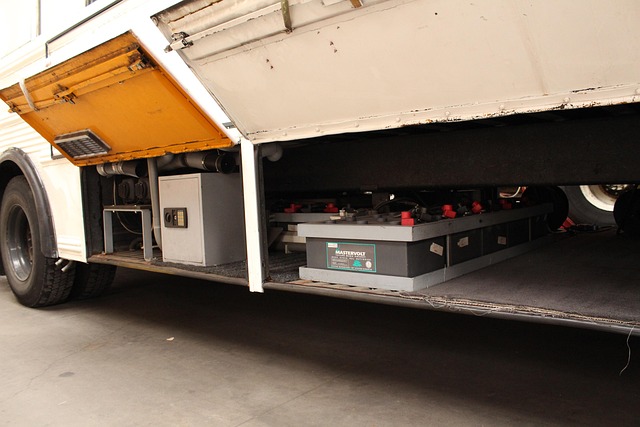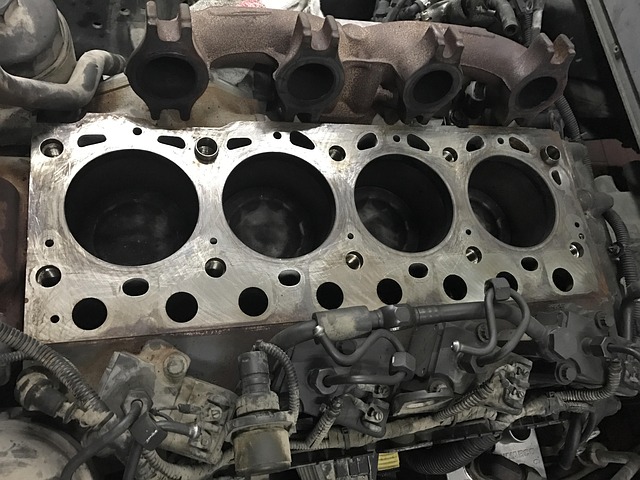Looking to register your car in California? This guide walks you through the entire process, from understanding the crucial VIN (Vehicle Identification Number) verification to finalizing the registration. We’ll break down the required documents, ideal times and locations, filling out the form, and paying fees. By following these steps, you’ll efficiently navigate California’s vin verification process and get your vehicle registered in no time.
- Understanding the Vehicle Identification Number (VIN) Verification Process
- Gather Required Documents for Car Registration in California
- Choose a Suitable Time and Location for Registration
- Complete the California Vehicle Registration Application Form
- Pay the Necessary Fees and Finalize the Registration
Understanding the Vehicle Identification Number (VIN) Verification Process

When registering your car in California, understanding the Vehicle Identification Number (VIN) verification process is crucial. The VIN is a unique 17-character code that serves as the vehicle’s fingerprint, providing essential details about its make, model, year, and manufacturing information. This number plays a vital role in the registration process, ensuring accuracy and preventing fraud.
In California, a vin inspection or mobile vin verification is typically required as part of the registration checklist. This involves cross-referencing the provided VIN with official databases to ensure it matches the manufacturer’s records and that the vehicle has not been reported stolen or has any outstanding issues. The process is straightforward and can often be completed quickly through a mobile vin inspection service, making it easier for California residents to register their vehicles promptly.
Gather Required Documents for Car Registration in California

Before you start the registration process in California, make sure you have all the necessary documents. The key document is the Vehicle Identification Number (VIN) verification report. This can be obtained through a mobile vin verifier or by conducting a vin inspection yourself. The state requires this to confirm your vehicle’s identity and ensure it meets safety standards.
Additionally, you’ll need proof of ownership, typically a title document, as well as valid identification like a driver’s license or passport. Other essential papers include insurance documents and any applicable registration fees. Having these prepared will streamline the car registration process in California and help avoid potential delays.
Choose a Suitable Time and Location for Registration

Choosing the right time to register your car in California is as important as understanding where to do it. Opt for a time when you have all the necessary documents readily available, including proof of ownership and insurance. Avoid peak hours at the Department of Motor Vehicles (DMV) offices, as lines can be long and waiting times extensive. Consider visiting during off-peak days or even utilizing online services if available, such as mobile vin verification tools that allow for a quick and convenient inspection of your vehicle’s history.
When selecting a location, prioritize DMV field offices over the main office in Sacramento. These satellite locations are often less crowded and have dedicated staff to assist with registration. If time is truly limited, explore options for mobile vin inspectors who can perform a VIN verification right at your convenience. This option streamlines the process, ensuring you get registered without the hassle of navigating busy facilities or lengthy procedures.
Complete the California Vehicle Registration Application Form

To begin the registration process for your vehicle in California, you’ll need to complete the California Vehicle Registration Application Form (Form DVF 140). This form requires various pieces of information, including details about the vehicle itself, such as make, model, and year, along with your personal data. One crucial aspect is ensuring accurate VIN verification, which can be facilitated by using a mobile vin verifier or conducting a vin inspection to cross-reference the provided details.
By inputting the correct Vehicle Identification Number (VIN), you simplify the registration procedure and ensure that all records align. This step is essential as it helps in identifying your vehicle uniquely and prevents potential issues during future transactions or inspections. A mobile vin inspection, when conducted through authorized channels, can expedite this process significantly.
Pay the Necessary Fees and Finalize the Registration

After completing the necessary paperwork for car registration in California, it’s time to pay the fees and finalize the process. The first step is to ensure that your vehicle passes the state’s emissions test if applicable. You can do this at a certified testing facility or, conveniently, with a mobile vin verifier who can conduct a quick and accurate inspection right at your location.
Once your vehicle is cleared for registration, you’ll need to pay the registration fee and any additional taxes or fees that apply. This can typically be done online through the California Department of Motor Vehicles (DMV) website or in person at a local DMV office. It’s important to have your Vehicle Identification Number (VIN) verification completed prior to this stage, as it plays a crucial role in ensuring the accuracy of the registration process. Consider using a mobile vin verifier for this step to save time and effort.
Registering a car in California involves several straightforward steps, including successful VIN verification. By ensuring your vehicle’s identification number is legitimate and gathering all required documents, you’ll be well on your way to completing the process efficiently. Choose a convenient time and location, fill out the application form accurately, and pay the necessary fees to finalize your registration quickly. Remember to keep your documentation up-to-date for future reference.
